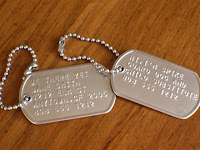Like, Alyeska. Alyeska is a mountain resort in Alaska that was established in the early 1960's in Girdwood, Alaska, about 35 miles southeast of Anchorage. The mountain itself is called Alyeska, which is actually an Aleut word meaning 'mainland', 'great country' or 'great land'. It is also the archaic name for Alaska.
And, it is the name of our new puppy, a 6-week-old blonde husky/shepherd/plus mix.
Isn't she adorable?
She is tiny now, and she will probably only grow to be a medium-sized dog. She is playful but very quiet as puppies go. Kacey discovered the online ad for her. When I called up about her, it turned out she was the last of 7 to go, and she was located in a housing area where the streets we drove on bore familiar names. We turned right on Tennessee, left on Nashville, and found her home at Cookville. Now, I'm always one for choosing animals based on 'signs', and these were very good ones indeed.
She spent the ride from there to the school to pick up Mack burrowing for shade in Michael's arms. She's been very brave about meeting her new alpha/mama, Anneke. And we think the two of them will get along fine. Right now they do pretty well, although Anneke can't follow this little critter closely enough. And, when they are outside, Anneke still has to go first.
Here's Anneke. She's a shepherd/collie/and maybe husky mix. And she 'talks' like a collie.
I was informed that Alyeska is my puppy. My husband told me that he felt a little left out of the whole process, so, even though he thought she was neat and he wasn't disappointed, for now Ally was going to be my dog. Well, that lasted for about a half an hour. He was the one taking her around the backyard and talking to her and rubbing her belly. Right now he's taking pictures for me to upload. (there will be more posted at facebook for anyone who is also my friend there)
Now, Michael is staying with us for a bit while he pulls his life together, earning some money, getting more experience in his chosen fields, buying a car. Oddly enough, while he has no desire to stay in Fayetteville -- it's not his hometown, after all, which is Nashville -- he is at least finding some solutions here. We're all agreed that he is basically sticking around long enough to take the best way out of here, but it is working better than he might have thought.
However, Alex was Michael's dog, and Alex is no longer here. So it's not too surprising that Michael spent a good amount of time today getting Alyeska and Anneke acquainted, and running Alyeska around the yard. Astute readers will notice from the pictures of Alex that Alyeska currently resembles him (as we say) only a lot. That may change as the husky markings come in darker, but for now the resemblance is soothing. And having something to care for and care about is important to Michael.
That's the story of our new family member. We'll update periodically. -- most current update: Alyeska is zonked out on our bedroom floor and Anneke is checking on her. Oh, and the cats don't much care, so long as they're fed.

